#new zealand producer
Text
Samantha from Otaki
Samantha was a sexy DJ with a passion for horses and funky music. She spent her days riding through the rolling hills of Otaki, New Zealand, and her nights spinning sick beats at the hottest clubs in town.
But Samantha wasn’t content with just being a solo act. She wanted to share her love of music with the world, so she formed a group called Otaki Airforce. Together with a talented group of…
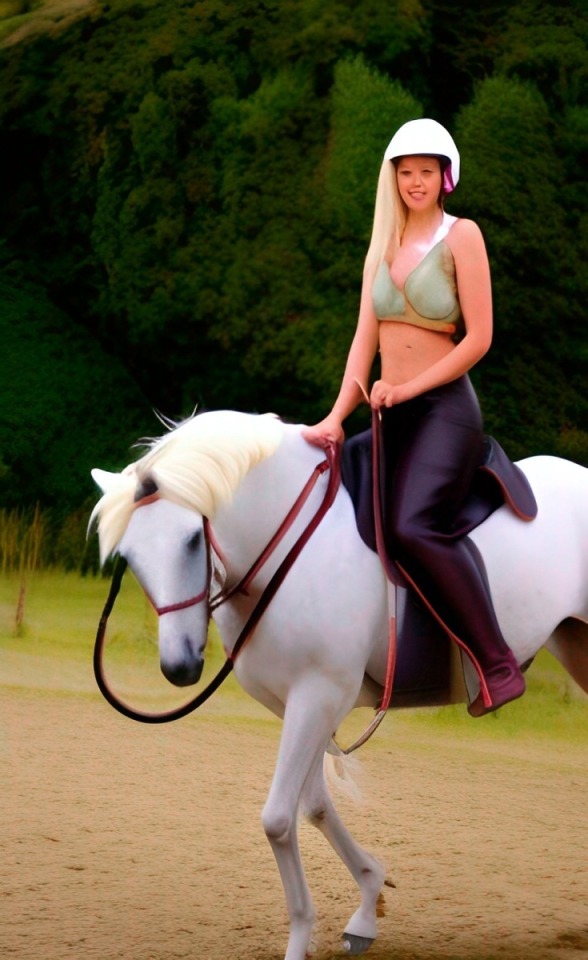
View On WordPress
#dj#dj origin story#dj producer#djing#how to start producing#new zealand producer#nz dj#otaki#otaki air force#producing tips
0 notes
Photo
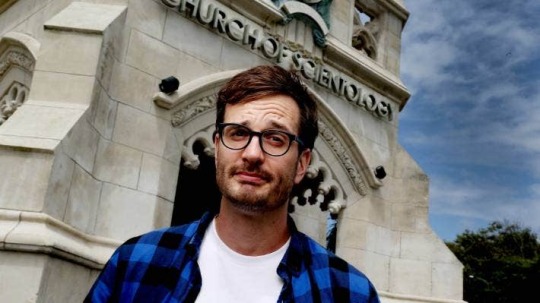
David Farrier
Gender: Male
Sexuality: Bisexual
DOB: 25 December 1982
Ethnicity: White - New Zealander
Occupation: Journalist, actor, presenter, producer, director
#David Farrier#bisexuality#lgbt#lgbtq#mlm#male#bisexual#1982#white#new zealander#journalist#actor#presenter#producer#director
63 notes
·
View notes
Text
KOJI PROFILE LINK
https://koji.to/@dj_Varangian
THIS IS THE PLACE TO FIND EXCLUSIVE CONTENT, MAKE SPECIAL REQUESTS & IT LINKS A GREAT DEAL OF PLATFORMS & CONTENT IN ONE PLACE.
Please check it out!

#web 3.0#koji#music#electronic#techno#tech house#dj#varangian#new zealand music#housemusicdj#music producer#linkinbio#SoundCloud
2 notes
·
View notes
Text
@sus_christ (ig) "PLANT MENTALITY 4" LP/CS.
COUNTDOWN TIMER: blackhouserecordsinc.com/pm4 (link in bio).
The long-awaited new album, finally being released on a limited vinyl and cassette run. Preorders kick off Friday, 5/31 at 9am PST/noon EST. Save the page link above to be first in line. Quantities will be limited. Full details and physical visuals on 5/31.
#slug christ#plant mentality#hiphop#emo#trap#electronic music#producer#beats#alternative#darkwave#melancholy#underground#pop culture#dream pop#pop#art#music#new music#coming soon#vinyls#vinyl records#records#colored vinyl#usa#canada#europe#australia#new zealand#japan#blackhouse
0 notes
Text
youtube
Oh, what a terrific game of rugby! What a momentous win for Canada! I knew, watching them play at the World Cup, they were capable of rivaling the best; but to beat the Black Ferns for the first time and on their home turf of Christchurch is absolutely amazing. They've been ruthless in this competition and they're already crowned Pacific Four Champions, with the game between New Zealand and Australia to be played next weekend. And they are the Number 2 ranked team in the world, as well!
#and to think that this team can produce these results play that intense as rugby with heaps less funding that their opponents...#It's about fucking time to back them up!#GO CANADA#Team Canada#O Canada#What a way to celebrate Tyson Beukboom becoming Canada's most-capped player!!!#Canada Women's Rugby Team#Black Ferns#New Zealand Women's Rugby Team#Rugby#Pacific Four Tournament#Pacific Four 2024#Pacific Four#Rugby XV#Rugby 15s#Sports#Canadian Sports#Canada Chronicles#Youtube
0 notes
Text
Oasis - Wonderwall
1995
"Wonderwall" is a song by English rockband Oasis, written by lead guitarist and chief songwriter Noel Gallagher. The song was produced by Gallagher and Owen Morris for the band's second studio album (What's the Story) Morning Glory?, released in 1995.
The song was released as the fourth single from the album on 30 October 1995. "Wonderwall" topped the charts in Australia and New Zealand and reached the top 10 in 13 other countries, including Canada and the US at number 5 and number 8, respectively, as well as number 2 on both the UK Singles Chart and the Irish Singles Chart. The single was certified septuple platinum by the British Phonographic Industry (BPI) and 11-times platinum by the Australian Recording Industry Association (ARIA). Its music video was directed by Nigel Dick and won British Video of the Year at the 1996 Brit Awards.
In Australia, it was voted number 1 on the alternative music radio station Triple J's Hottest 100 of 1995 and "20 Years of the Hottest 100" in 2013. In May 2005, "Wonderwall" was voted the best British song of all time, in a poll of over 8,500 listeners conducted by Virgin Radio. In October 2020, it became the first song from the 1990s to reach one billion streams on Spotify.
"Wonderwall" received a total of 80,2% yes votes!
youtube
4K notes
·
View notes
Text

Final Blow.
Bug Fact: The New Zealand Glowworm is a species of fungus gnat endemic to New Zealand's cave systems. The larval stage produces a blue-green bioluminescence.
First || Prev // Next
Masterpost
Some pictures of this amazingly unique creature and it's habitat.



#Seriously one of my favorite pages to make#If you can't tell. I love drawing action scenes#And Slash sound effects#The Shining Knight come to the rescue!#Finally putting to rest the kingdoms lost souls#and not letting another fall to the petty grievances of a GOD#Yes that moth was gonna try and stab this baby boy. Evil Evil creature#I love glowworms! Yippie#my art#art#hollow knight#hollow knight knight#hollow knight ghost#hollow knight au#hollow knight comic#dewi#dewi's adventures in Hollow Knight
2K notes
·
View notes
Photo

New Zealand producer Lord Echo (aka Mike August aka Mike Fabulous)
1 note
·
View note
Text
GOODNIGHT NURSE ARE BACK NOW?!! WE MIGHT BE GETTING SERPENT QUEEN PART THREE?? THE EMO RENAISSANCE IS REAL
#if goodnight nurse were an American band they would have been bigger than Fall Out Boy I'm pretty sure#this is Joel 'producer for Lorde and cowriter for Taylor Swift' Little's high school band btw#Goodnight nurse#new Zealand#emo#music#emo revival#emo renaissance#Joel little#aotearoa
0 notes
Text
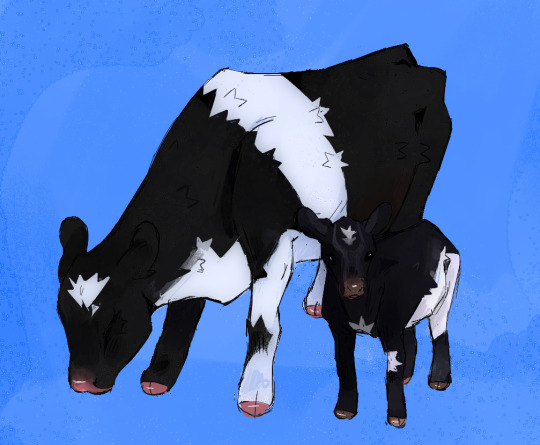
Lady and her calf, Derby, circa 1998 🐄
Went down a rabbithole reading about Enderby Island cattle earlier so..... This is currently the rarest breed in the world flat out- with only ~27 existing as of 2019 (Supposedly, since it's a little hard to find any info on these guys)
Enderby island cattle existed in the mid 90's as an isolated herd living on Enderby island, off the coast of NZ. They were culled down from a herd of about 50 (to conserve native flora) until Lady was the only one left from the original herd-- after which she was transported to mainland New Zealand and artificially inseminated to produce Derby.
After this a handful of enderby cattle were cloned to bring the population up to ~27, with ongoing conservation efforts. The most recent reference I can find to an extant population is from an NZ Journal of Ecology article published in 2022 so. Make of that what you will 👍
#hoof draws#hooves#idk . I just really like populations of animals that come from being dumped on an island in the 1800's<3
605 notes
·
View notes
Text
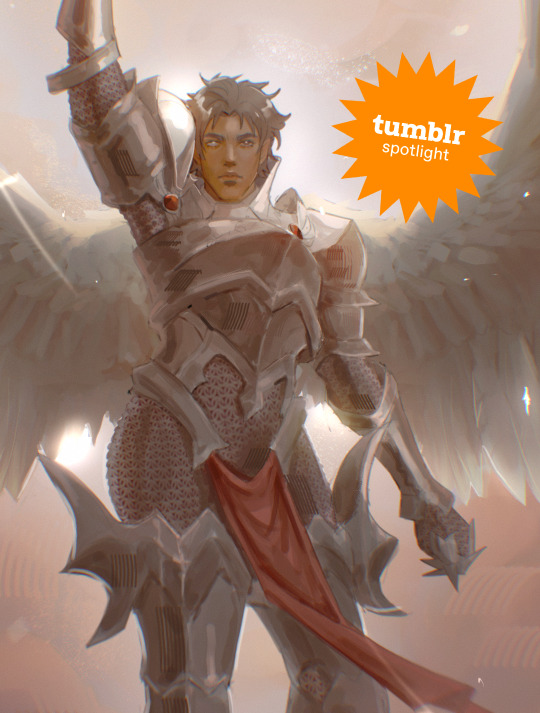
Creator Spotlight: @chaaistheanswer
Hi everyone! I am Clara, but you can also call me chaa! I am a digital artist based in Auckland, New Zealand, with a bachelor’s degree in Creative Media Production. After graduating from uni, I moved out to pursue my art career and I’ve been a freelance digital artist ever since. I love concept art, especially character design! Creating characters influenced by my love for fantasy is what I live for. Thank you for stopping by, and I hope you enjoyed my art!
And thank you, Tumblr, for this opportunity!
Check out our interview with Clara below!
Did you originally have a background in art? If not, how did you start?
I specialized in art in high school and have a bachelor’s degree in Creative Media Production from Massey University with an animation pathway. For our thesis film, which I worked on with several of my classmates, I took on the role of producer, art director, and concept artist. Our short film was featured in the Wellington Film Festival Terror-Fi in 2020. After graduating, I went on to become a freelance artist, but my goal is to work for the gaming industry as a character concept artist. Ever since I first picked up a pencil, I knew I wanted to become an artist!
Have you ever had an art block? If so, how did you overcome it?
Art block is quite common among artists, and unfortunately, I too have fallen prey to the affliction. I have several ways of overcoming art block: watching movies, playing games, reading, or going out for a drive with my sister. These are just a few things I love to do to help keep my creative juices flowing!
What is one habit you find yourself doing a lot as an artist?
I tend to obsessively research about completely unrelated topics while I draw. I find learning new things helps improve my concept designs, especially in creating backgrounds for my characters.
Over the years as an artist, what were your biggest inspirations behind your creativity?
Video games and anime were my biggest inspirations! Anything with a captivating story that’ll send me to the edge of my seat, and loveable characters. I’m particularly drawn to high and dark fantasy.
How has technology changed the way you approach your work?
Technology has made a huge impact on us artists over the last few years. I used to draw a lot on paper, but since getting a tablet, I find myself searching for the undo and redo buttons and even trying to zoom constantly while I draw on paper. I used to only draw for myself as well, but after posting my art online, I now have an audience to whom I can share my art. Because of this, I am able to earn a living doing what I love by creating illustrations for clients.
What is a recent creative project that you are proud of?
I am very proud of this recent commission I’ve done for a client! Fortunately, the piece turned out exactly how I wanted it to look, and my client was very happy with the result. I am also in the process of working on a Webtoon, which is going as smoothly as I hoped it would be before its re-release!
What advice would you give to younger you about making art that's personal or truthful to your own experiences?
The best advice I would give my younger self is to never hold back! Try not to think about the negatives of creating and sharing art that you believe in. Embrace vulnerability, and don’t be afraid to dig deep into your own emotions and experiences. Always explore, and don’t limit yourself to your own bubble. And most important of all, stay true to yourself! Stay true to your values and beliefs, and never compromise your own authenticity for the sake of pleasing others. Your art is a reflection of you as a person.
Who on Tumblr inspires you and why?
@yuumei-art has been an inspiration to me since my early Deviantart days. I admire how she uses her skills to focus on environmentalism and cyber activism.
@nipuni is another inspiration of mine. I found her when I was in the process of recovering from Dragon Age Solavellan hell. I admire how she manages to capture faces well while also sticking to her style. Her paintings are so beautiful and very pleasing to my eyes!
Thanks for stopping by, Clara! If you haven't seen her Meet the Artist piece, be sure to check it out here. For more of Clara's work, follow her Tumblr, @chaaistheanswer!
603 notes
·
View notes
Text
Backstreet Boys - I Want It That Way
1999
"I Want It That Way" is a song by American vocal group Backstreet Boys. It was released as the lead single from their third studio album, Millennium (1999). It was written by Swedish hitmakers Max Martin and Andreas Carlsson. Max Martin has written or co-written 26 Billboard Hot 100 number-one songs, most of which he has also produced or co-produced. He is the songwriter with the second-most number-one singles on the chart, behind only Paul McCartney (32) and tied with John Lennon (26 both). In addition, he currently holds the record for the most Hot 100 number-one songs as a producer, with 24 as of January 2024. Congrats! 🥳
"I Want It That Way" was nominated for three Grammy Awards, including Song and Record of the Year. The music video received four MTV Video Music Awards nominations, winning Viewer's Choice. It became the group's first music video to surpass one billion views on YouTube in 2021.
"I Want It That Way" is the Backstreet Boys' signature song, and commercially it reached the number-one spot in more than 25 countries, including Austria, Germany, Italy, New Zealand, Switzerland and the UK.
The song was famously used in the cold open of the Brooklyn Nine-Nine season 5 episode "DFW". Andy Samberg's character has a police lineup sing the song to help a victim identify a killer.
"I Want It That Way" received a total of 82% yes votes!
youtube
3K notes
·
View notes
Text

Oroperipatus tiputini: A new species of Velvet Worm from the Ecuadorian Amazon.
Velvet Worms, Onychophora, are a unique group of elongate, soft bodied, many legged Animals, given phylum status and considered to be among the closest living relatives to the Arthropods. They are currently the only known phylum of Animals known entirely from terrestrial species, both living and fossil, although they may be related to the Lobopodans, an entirely marine group known only from Early Palaeozoic fossils.
The 230 living Velvet Worm species are divided into two groups, the Peripatidae, found in the tropics of Central and South America, the Antilles Islands, Gabon, India, and Southeast Asia, and the Peripatopsidae, found in Chile, South Africa, Papua New Guinea, Australia, and New Zealand. All South American members of the Peripatidae are placed within a single clade, the Neopatida, which is further divided into two lineages, the 'Andean' genus Oroperipatus, and the 'Caribbean' lineage, comprising all other genera.
Read the paper: (https://zse.pensoft.net/article/117952/)
The new species is described from five male, three female, and three juvenile specimens collected in the vacinity of the Tiputini Biodiversity Station of the Universidad San Francisco de Quito in Orellana Province, Ecuador, between 2001 and 2023, as well as one youngling, which one of the female specimens gave birth to in captivity. The new species is named Oroperipatus tiputini, in reference to the location where it was discovered.
Adult female specimens of Oroperipatus tiputini very between 46 and 65.3 mm in length, while the adult males are smaller at 22.7 to 39.8 mm. Females have between 37 and 40 pairs of legs, while the males have between 34 and 37, although one male specimen had a different number of legs on each side, with 35 legs on the right and 36 legs on the left.
The species shows considable colour variation, with one adult male being a light brown colour with a faint rhomboid pattern, two adult males and one adult female being brown with orange diamonds, and another female (the one which produced a youngling) being a plain dark orange colour. The youngling itself was yellowish with a diamond pattern. All specimens were darked on their heads and antenae, had orange or brown legs, and a distinctive white band on the head.
Most specimens of Oroperipatus tiputini were found on small herbaceous Plants within old growth, closed canopy upland forests around the Tiputini Biodiversity Station. Other specimens were found in leaf litter, or on the butress roots of trees to a height of about 70 cm above the ground. One specimen was found in a Bromiliad. The Worms were more active at night.
IMAGE: Colour variation in the life of Oroperipatus tiputini. (A) Adult male paratype, ZSFQ-i8270; (B) adult male paratype, ZSFQ-i5151; (C) adult female holotype, ZSFQ-i8248, and youngling paratype, ZSFQ-17794, a few days after being born. All photographs were taken at the Tiputini Biodiversity Station. Photographs by Pedro Peñaherrera (A), (C) and Diego Cisneros-Heredia (B).
284 notes
·
View notes
Text
Episode 93: How nonbinary and binary people talk - Interview with Jacq Jones
There are many ways that people perform gender, from clothing and hairstyle to how we talk or carry ourselves. When doing linguistic analysis of one aspect, such as someone's voice, it's useful to also consider the fuller picture such as what they're wearing and who they're talking with.
In this episode, your host Gretchen McCulloch gets enthusiastic about how nonbinary people talk with Jacq Jones, who's a lecturer at Te Kunenga ki Pūrehuroa / Massey University in Auckland, New Zealand. We talk about their research on how nonbinary and binary people make choices about how to perform gender using their voices and other variables like clothing, and later collaborating with one of their research participants to reflect on how it feels to have your personal voice and gender expression plotted on a chart. We also talk about linguistic geography, Canadian and New Zealand Englishes, and the secret plurality of R sounds in English and how you can figure out which one you have by poking yourself (gently!) with a toothpick.
Click here for a link to this episode in your podcast player of choice or read the transcript here.
Announcements:
In this month’s bonus episode we get enthusiastic about three of our favourite kinds of linguistic mixups: spoonerisms, mondegreens, and eggcorns! We talk about William Spooner, the Oxford prof from the 1800s that many spoonerisms are (falsely) attributed to, Lauren's very Australian 90s picture book of spoonerisms, the Scottish song "The Bonny Earl of Moray" which gave rise to the term mondegreen, why there are so many more mondegreens in older pop songs and folk songs than there are now, and how eggcorn is a double eggcorn (a mis-parsing of acorn, which itself is an eggcorn of oak-corn for akern).
Join us on Patreon now to get access to this and 80+ other bonus episodes. You’ll also get access to the Lingthusiasm Discord server where you can chat with other language nerds about your favourite linguistic mixups.
Here are the links mentioned in the episode:
Jacq Jones' website
'Beyond a dot on a graph: A participant’s perspective on being quantified in variationist sociolinguistic research' presentation slides by Kaspar Middendorf and Jacq Jones
Lingthusiasm episode 'What visualizing our vowels tells us about who we are'
Lingthusiasm bonus episode 'How we made vowel plots with Bethany Gardner'
Lingthusiasm episode 'The linguistic map is not the linguistic territory' (linguistics and geography)
Lal Zimman's website
'The Female-to-Male Transsexual Voice: Physiology vs. Performance in Production' by Viktória Papp
'Voice and Communication Change for Gender Nonconforming Individuals: Giving Voice to the Person Inside' by Shelagh Davies, Viktória Papp, and Christella Antoni
You can listen to this episode via Lingthusiasm.com, Soundcloud, RSS, Apple Podcasts/iTunes, Spotify, YouTube, or wherever you get your podcasts. You can also download an mp3 via the Soundcloud page for offline listening.
To receive an email whenever a new episode drops, sign up for the Lingthusiasm mailing list.
You can help keep Lingthusiasm ad-free, get access to bonus content, and more perks by supporting us on Patreon.
Lingthusiasm is on Bluesky, Twitter, Instagram, Facebook, Mastodon, and Tumblr. Email us at contact [at] lingthusiasm [dot] com
Gretchen is on Bluesky as @GretchenMcC and blogs at All Things Linguistic.
Lauren is on Bluesky as @superlinguo and blogs at Superlinguo.
Lingthusiasm is created by Gretchen McCulloch and Lauren Gawne. Our senior producer is Claire Gawne, our production editor is Sarah Dopierala, our production assistant is Martha Tsutsui Billins, and our editorial assistant is Jon Kruk. Our music is ‘Ancient City’ by The Triangles.
This episode of Lingthusiasm is made available under a Creative Commons Attribution Non-Commercial Share Alike license (CC 4.0 BY-NC-SA).
#linguistics#language#lingthusiasm#podcast#podcasts#episodes#Jacq Jones#interview#nonbinary speech#binary speech#phonetics#phonology#geology#SoundCloud
245 notes
·
View notes
Text
let’s talk about the kiwi!!

(an info-dump about one of the weirdest, most scientifically interesting birds we know of today!)
so, we’ve all heard about ratites, right?
well, maybe you don’t know them by name, but you’ve most certainly either heard about them or seen them at some point.
some commonly known members of the ratite group are species like ostriches, emus, and cassowaries— as shown below:
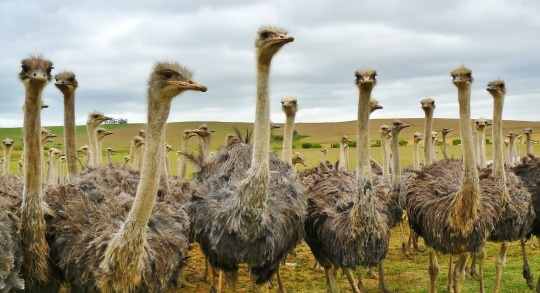
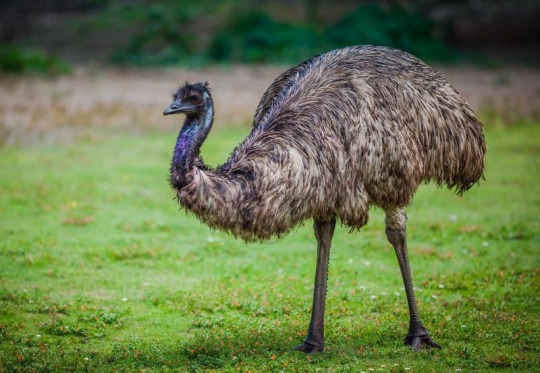
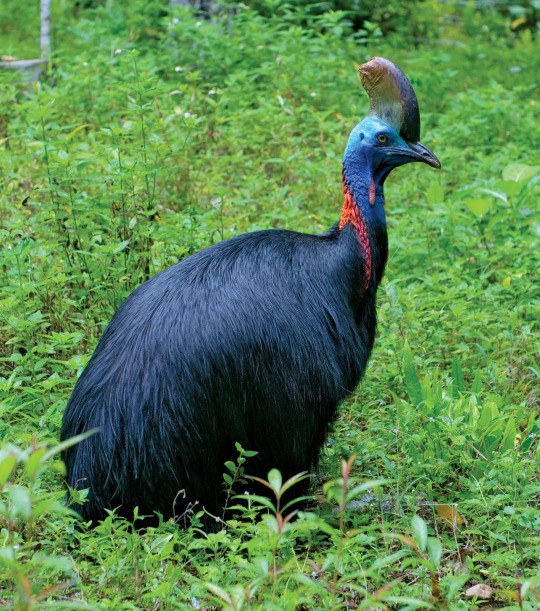
ratites are all flightless birds within the infraclass palaeognathae— the infraclass that none other than the (now extinct) moa and elephant bird belong to!
now, these birds all share very similar characteristics; they’re large, long-necked, and long-legged with big clawed feet. all of these birds are also diurnal— which means they’re primarily active during the day time, just like us!
however, there is one species in this infraclass that is not quite like the others..
the kiwi.
not only are kiwi significantly smaller than their fellow ratites, but they also happen to be nocturnal.
and despite being small, their eggs are incredibly large, taking up to around 20% of the kiwi’s body weight, which has caused a lot of rigorous debate between scientists on exactly why.
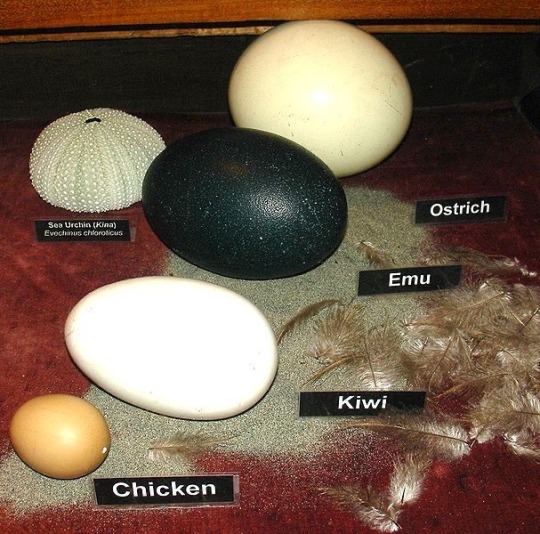
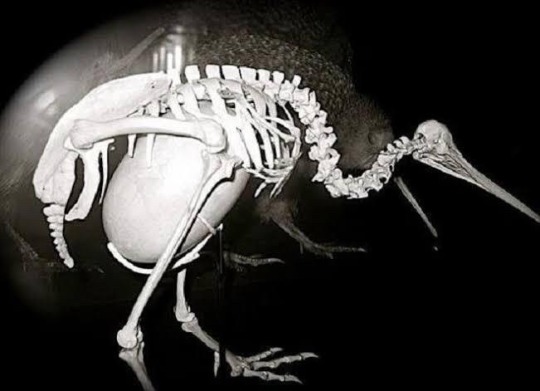
one outdated theory suggested that perhaps the kiwi had shrunk over time from previously being very large like its ratite relatives, while its egg remained big…. but this has been debunked in recent years.
the current consensus, while still a theory, is that the egg size has to do more with precocity than anything else;
kiwis are born precocial, which makes them pretty much immediately independent upon hatching, with the ability to run and feed themselves without the help of their parents.
modern DNA analysis suggests that the size of kiwi eggs is not just a left-over trait from ‘incomplete’ evolution, but instead the exact opposite— an evolved adaptation to ensure better chances of survival.
due to their sheer size, kiwi eggs house more yolk than average, which ends up keeping newly hatched kiwis nice and fed until they learn to forage food for themselves.
when mammals began to spread in new zealand, kiwis had way more predators to worry about, and it’s theorized that they were previously unequipped to deal with this startling introduction of land-predators, such as stoats and rats, that started feeding on their eggs.
this could explain why kiwi eggs have developed to be so large over time— they give the chicks plentiful nutrients and thicker shells to ensure a better chance of survival against predation.
so… yeah. kiwis produce monster eggs and no one fully knows why just yet. neat, huh?
and that’s not even where the weirdness ends, my friends!
on top of all of this, it’s been a running joke in the bird world that kiwis are ‘honorary mammals,’ not only because of their weirdly mammalian appearance, but also because of some of their atypical biological traits.
for instance, kiwis have an average body temperature of around 38 degrees celsius .. aka, 100 degrees fahrenheit.
while this is not typical at all for birds, this is very typical for mammals, which has stumped a lot of researchers over the years.
similarly, kiwis are also the only bird in the world with exposed nostrils at the end of their beak, which can help them detect prey by using scent instead of their vision, which is very poor.
so… yeah. kiwis are the nocturnal, freakish little cousins of some of the biggest, most dangerous birds on the planet, and scientists are, quite frankly, still a little weirded out by them.
#let me know if you all want more infodump posts like this!#this was fun:)#kiwi#kiwi bird#ratite#palaeognathae#apterygidae#birds#birdposting#bird facts#animal facts#biology facts#science#birdblr#informative#daemnblogging
177 notes
·
View notes
Text
A research paper published in Science Advances reveals a direct correlation between plastic production and plastic pollution, such that every 1% increase in plastic production is associated with a 1% increase in plastic pollution in the environment.
The study finds that fast-moving consumer goods companies disproportionately contribute to the problem more than household and retail companies. The study marks the first robust quantification of the global relationship between plastic production and pollution.
The research, led by scientists from a dozen different universities in the United States of America, Australia, the Philippines, New Zealand, Estonia, Chile, Sweden, Canada, and the United Kingdom, found that 56 global companies are responsible for more than half of all branded plastic pollution.
The Coca-Cola Company was responsible for 11% of branded waste, followed by PepsiCo (5%), Nestlé (3%), Danone (3%), and Altria/Philip Morris International (2%). The top companies identified produce food, beverage, or tobacco products.
166 notes
·
View notes